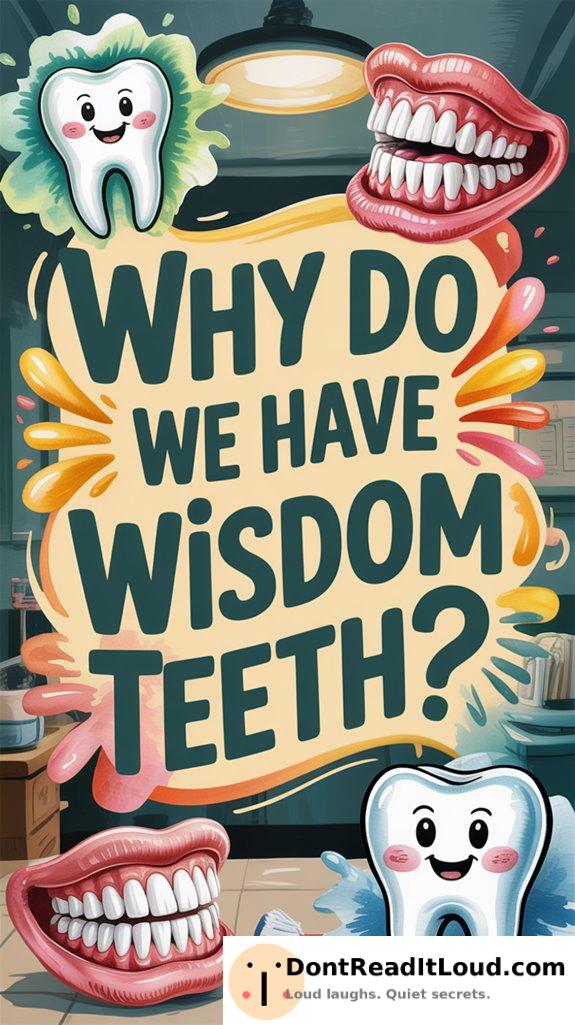
You have wisdom teeth because, in the past, they helped our ancestors chew tough foods like roots and meat. Over time, as our diets softened, human jaws became smaller, leaving less room for these extra molars. Today, wisdom teeth often become impacted or grow crooked, leading to dental issues. Fortunately, modern dentistry provides solutions to address these problems. Interested in how our habits shaped our teeth? There’s still plenty to learn!
The Evolutionary Role of Wisdom Teeth
Although modern diets have rendered them mostly unnecessary, wisdom teeth once played a crucial role in our ancestors’ lives. Imagine this: ancient humans chowing down on raw roots, leaves, and the occasional mammoth steak. Their robust jaws needed an extra set of molars to grind all that prehistoric goodness. Fossil evidence shows that these teeth were the MVPs of mastication back in the day.
Fast forward to today, some of us wonder why we still have these leftover molars. While a few people have wisdom teeth that work just fine, others end up in pain and scheduling surgery. It’s a quirky reminder that evolution sometimes leaves us with features we no longer need.
The Impact of Dietary Changes on Our Jaws
As human diets have softened over the centuries, the structure of our jaws has changed considerably. Back in the day, your ancestors needed jawbones that could double as nutcrackers, ready to tackle raw meat and crunchy roots.
But with the shift to gentler, processed foods, our jaws don’t develop as robustly as before.
Modern jaws are getting smaller, much like downsizing to a cozier home. This sleeker shape means there’s often not enough space for wisdom teeth.
While your ancestors handled tough foods with ease, you might find your jaw feeling a bit cramped in comparison.
Common Problems Associated With Wisdom Teeth
When wisdom teeth begin to emerge, they can cause problems because there isn’t much space left in the jaw. Tooth impaction is common—wisdom teeth may get stuck if there’s no room to grow. Imagine them as unexpected guests at a crowded party; it gets uncomfortable quickly.
Gum infections are another frequent issue. Food can become trapped around partially erupted wisdom teeth, leading to red and swollen gums. It’s your mouth’s way of signaling that these new arrivals aren’t welcome.
Modern Approaches to Managing Wisdom Teeth
With advances in dental care, you now have several options for managing wisdom teeth effectively. Gone are the days when extraction was your only option. Today, you can visit your dentist and choose a treatment plan tailored to your needs—no drama required.
If your wisdom teeth are causing problems, orthodontic solutions may help keep them in place. Braces can guide these molars and prevent misalignment.
However, if your third molars continue to cause issues, extraction may still be necessary. Either way, you have modern solutions to maintain a healthy, confident smile.
Conclusion
You’ve now learned why wisdom teeth exist and how they’ve changed over time. As our diets became softer, our jaws grew smaller, leading to more dental problems. Many people experience issues like impaction and infection. Fortunately, modern dentistry provides options such as regular checkups or removal to keep your smile healthy. Understanding this evolutionary story helps you make better choices about your wisdom teeth.



